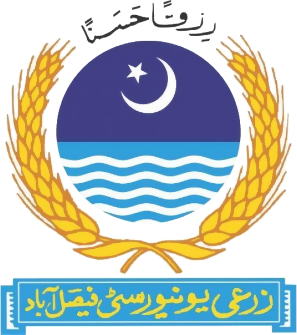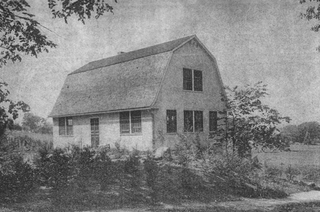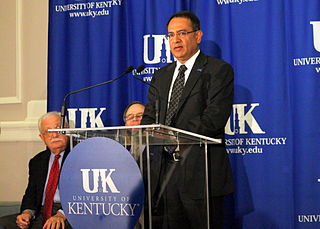
Cranberries are a group of evergreen dwarf shrubs or trailing vines in the subgenus Oxycoccus of the genus Vaccinium. In Britain, cranberry may refer to the native species Vaccinium oxycoccos, while in North America, cranberry may refer to Vaccinium macrocarpon. Vaccinium oxycoccos is cultivated in central and northern Europe, while Vaccinium macrocarpon is cultivated throughout the northern United States, Canada and Chile. In some methods of classification, Oxycoccus is regarded as a genus in its own right. Cranberries can be found in acidic bogs throughout the cooler regions of the Northern Hemisphere.

Łódź University of Technology was created in 1945 and has developed into one of the biggest technical universities in Poland. Originally located in an old factory building, today it covers nearly 200,000 sq. meters in over 70 separate buildings, the majority of which are situated in the main University area. Almost 15,000 students are currently studying at the university. The educational and scientific tasks of the university are carried out by about 3,000 staff members.

The University of Agriculture (UAF) is a public research university in Faisalabad, Pakistan. It is the second largest university of Pakistan by area with a covered area of 2,550 acres as compared to Punjab University's 3,000-acre campus in Lahore which is the largest.

The Institute of Food Technologists (IFT) is an international, non-profit scientific society of professionals engaged in food science, food technology, and related areas in academia, government and industry. It has more than 17,000 members from more than 95 countries.

Samuel Cate Prescott was an American food scientist and microbiologist who was involved in the development of food safety, food science, public health, and industrial microbiology.

Phi Tau Sigma (ΦΤΣ) is the Honor Society for food science and technology. The organization was founded in 1953 at the University of Massachusetts Amherst by Dr. Gideon E. (Guy) Livingston, a food technology professor. It was incorporated under the General Laws of the Commonwealth of Massachusetts December 8, 1953, as "Phi Tau Sigma Honorary Society, Inc."

Carl R. Fellers (1893–1960) was an American food scientist and microbiologist who was involved in the pasteurization of dried foods and canning Atlantic blue crab.

Sambalpur University is a public research university located in Burla town, of district Sambalpur, India, in the state of Odisha. Popularly known as Jyoti Vihar, it offers courses at the undergraduate, post-graduate and doctoral (Ph.D.) levels. The governor of Odisha is the chancellor of the university. The campus is located 15 km away from Sambalpur.
Charles Olin Ball (1893–1970) was an American food scientist and inventor who was involved in the thermal death time studies in the food canning industry during the early 1920s. This research was used as standard by the United States Food and Drug Administration for calculating thermal processes in canning. He was also a charter member of the Institute of Food Technologists in 1939 and inducted among the first class of its fellows in 1970 for his work in academia and industry.
Food chemistry is the study of chemical processes and interactions of all biological and non-biological components of foods. The biological substances include such items as meat, poultry, lettuce, beer, milk as examples. It is similar to biochemistry in its main components such as carbohydrates, lipids, and protein, but it also includes areas such as water, vitamins, minerals, enzymes, food additives, flavors, and colors. This discipline also encompasses how products change under certain food processing techniques and ways either to enhance or to prevent them from happening. An example of enhancing a process would be to encourage fermentation of dairy products with microorganisms that convert lactose to lactic acid; an example of preventing a process would be stopping the browning on the surface of freshly cut apples using lemon juice or other acidulated water.
Gideon E. "Guy" Livingston was an American food scientist who was responsible for founding Phi Tau Sigma at the University of Massachusetts Amherst. He was also well known in food safety for foodservice establishments and for refrigerated foods shelf-life studies.
Vladimir Haensel was an American chemical engineer who invented the platforming process - a platinum catalytic process for reforming petroleum hydrocarbons into gasoline. In addition, he was influential in the creation of catalytic converters for automobiles.
John Joseph Powers was an American food scientist who was involved in the creation of the Food Science Department at University of Georgia in Athens, GA. He also served as President of the Institute of Food Technologists (IFT) in 1986-87 and was Editor of the Journal of Food Science and "Journal of Food Quality.
Kalidas Shetty is a noted food scientist and professor of food science at the University of Massachusetts Amherst, and a recipient of the Jefferson science fellowship. Currently he serves as Associate Vice President for International Partnerships and Collaborations and Professor Plant Metabolism and Food Security at North Dakota State University, Fargo, ND. He is the author of a significant number of books on food science. He holds at least four patents and has been editor of several reputed agricultural publications.

Otto Vogl was an American chemist, polymer scientist, and educator.

The Apiary Laboratory, more often referred to as the Apiary, is a research laboratory at the University of Massachusetts Amherst. Originally built for the study of honey bees and apiculture, today it is primarily used to study native pollinator species and the chemicals and pathogens impacting their populations. This academic building is unique in that it is credited as being the first in the United States to be erected exclusively for the teaching of beekeeping.

Kumble R. Subbaswamy is a physicist and college administrator who served as the 11th chancellor of the University of Massachusetts Amherst. He currently serves as Interim Senior Vice President for Academic and Student Affairs and Equity, serving the five-campus University of Massachusetts system. He formerly served as the provost of University of Kentucky.

Faculty of Science is a faculty of the University of Zagreb that comprises seven departments - biology, physics, chemistry, mathematics, geophysics, geography and geology. The Faculty has 288 full professors, associate and assistant professors, 180 junior researchers and about 6000 students.
Critical Reviews in Food Science and Nutrition is a food science journal published monthly by Taylor & Francis. It was originally established in 1970 as Critical Reviews in Food Technology, but changed to its current name in 1975. The editor-in-chief is Fergus M. Clydesdale. According to the Journal Citation Reports, the journal has a 2019 impact factor of 7.860, ranking it 3rd out of 89 journals in the category "Nutrition and Dietetics" and 4th out of 139 journals in the category "Food Science and Technology".
David Julian McClements is a British food scientist who is a distinguished professor at the University of Massachusetts Amherst Department of Food Science. He is an elected fellow of the Royal Society of Chemistry, American Chemical Society, and Institute of Food Technologists, as well as the editor of the Annual Review of Food Science and Technology.












